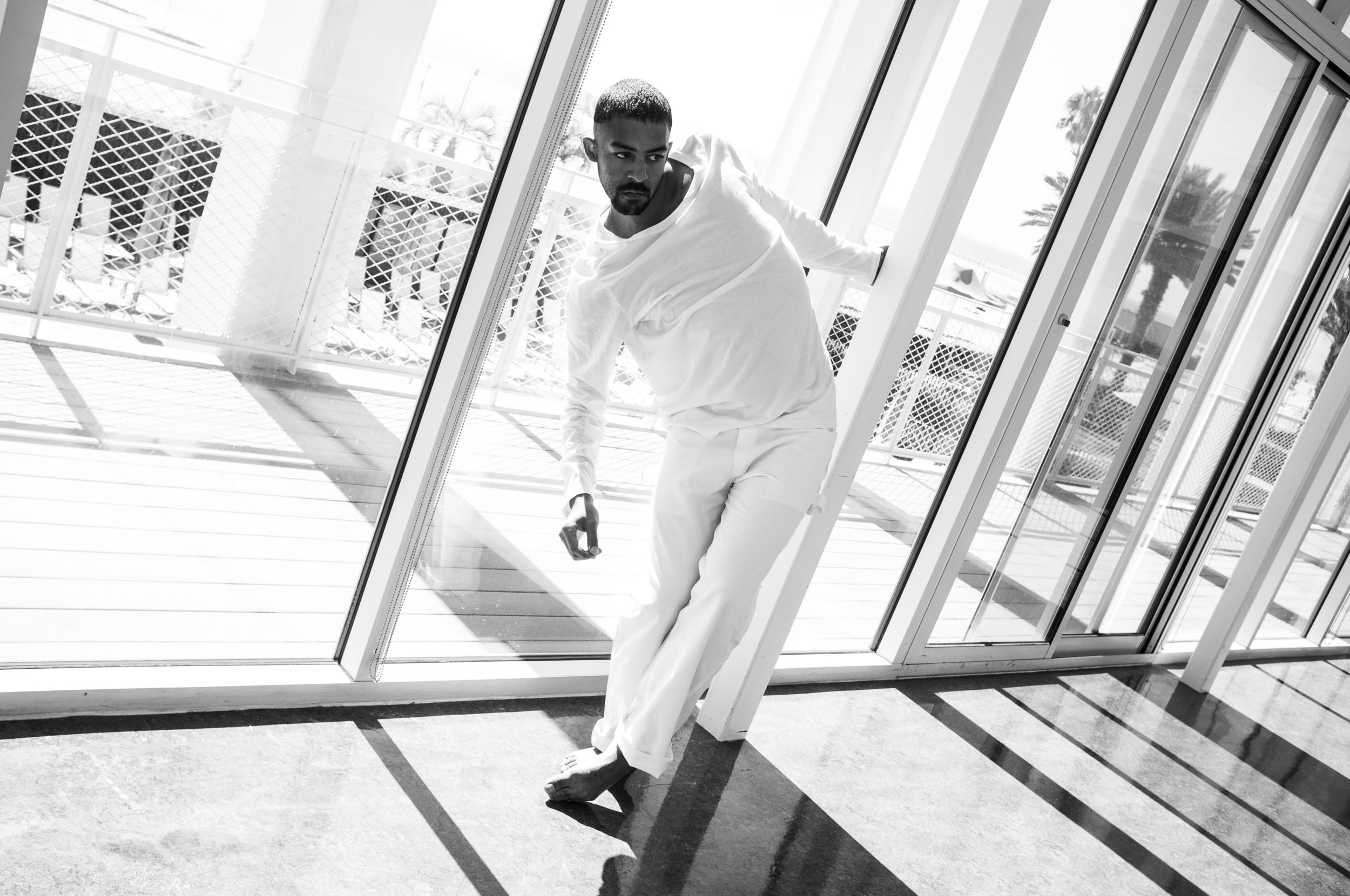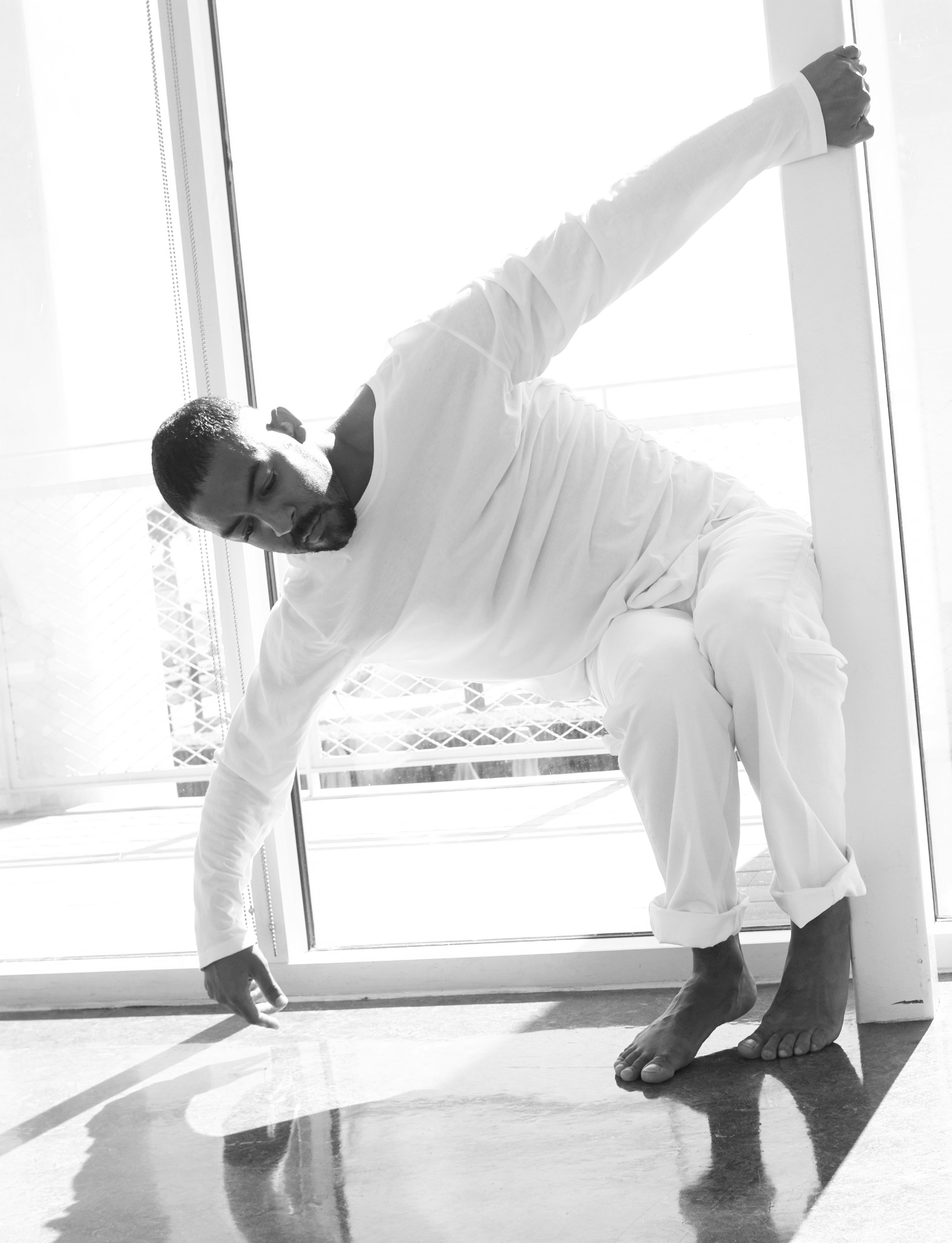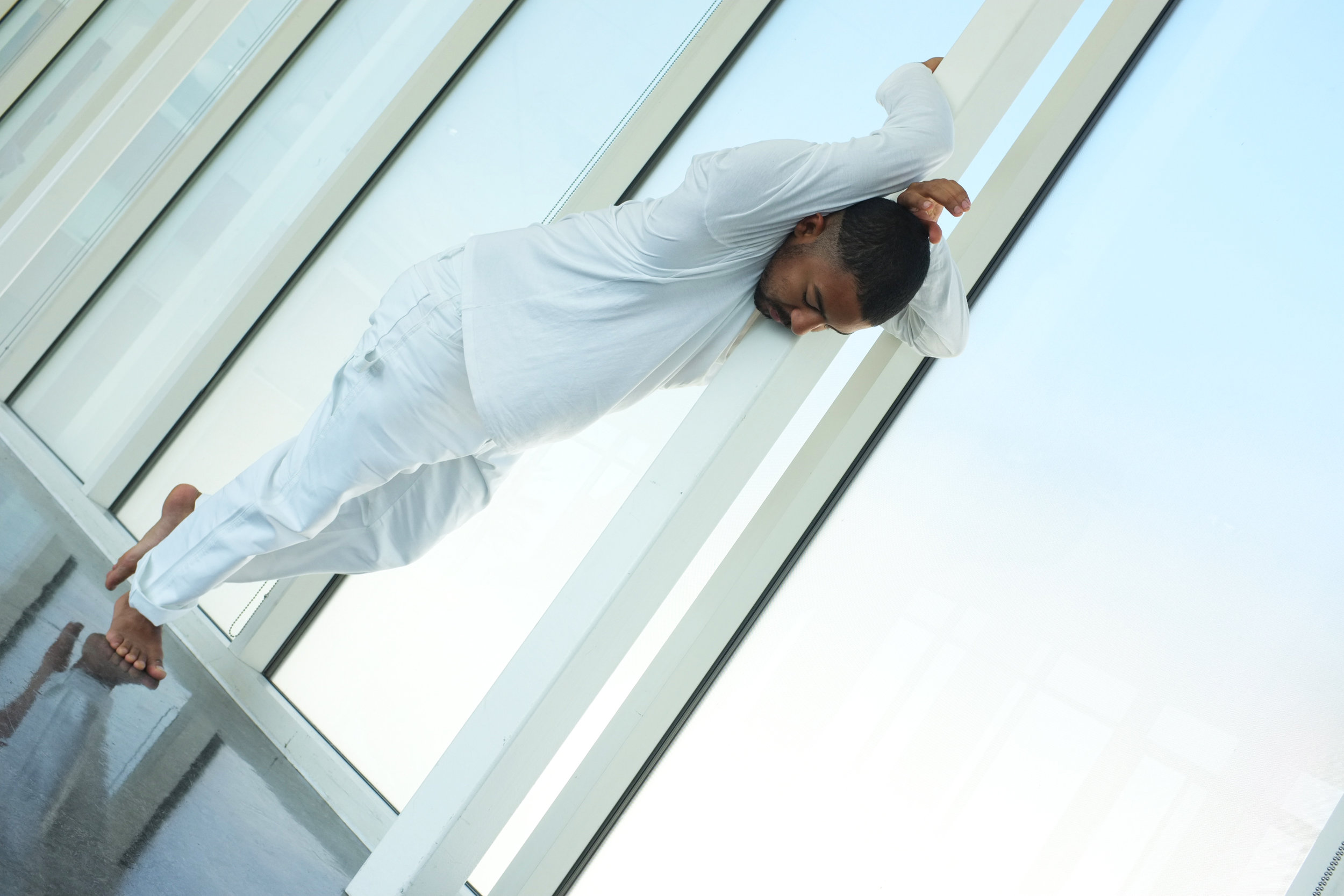Photograph by Max Barnett
interview by Lara Monro
Born in Harrogate, North Yorkshire, Holly Blakey found contemporary dance as a teenager. After she was rejected by a number of well-known dance schools, she attended University of Roehampton where teaching dance was the only option. What was initially a devastating and painful life transition turned out to be a profound moment for Blakey, leading to a fruitful career as a choreographer. Free from the confines of institutional models and languages of dance, she created her own — one that advocates drama and our lived experiences.
Honesty, intimacy, and a sense of community feed into her work, as does her fascination with music, film, and TV. Her ability to emulate pop culture has led Blakey to traverse multiple creative industries such as directing music videos for musicians who include Florence Welch and Coldplay. She also had a longstanding collaboration with the late fashion designer Vivienne Westwood, whose widower Andreas Kronthaler, has designed the costumes for the return of her performance of Cowpuncher My Ass. This Wild West dance show, scored by Mica Levi, takes the notion of the hyper masculine, yet camp cowboy, as a starting point to explore the archetypes of masculinity through non-linear perspectives.
Cowpuncher My Ass will be playing at Royal Festival Hall, Southbank Centre, Wednesday 15 February at 7:30 pm.
Autre’s London editor at large, Lara Monro, spoke with Blakey in between rehearsals to discuss how the performance challenges what might be deemed acceptable in choreography and much more.
LARA MONRO: How would you say your transition from being a dancer to teaching has impacted your approach to choreography?
HOLLY BLAKEY: Well, I think because it was so non-linear it meant I had to reframe what its potential could be and think of new ways of accessing it. I found a separate authenticity so that I could practice in a way that felt clear and realistic to who I was and what I was doing. It really did feel like the end of the world at the time because I'd danced all my life and I now think it was my biggest gift because I had to shift the way I was accessing things and I had to adjust my way of thinking. I think it's led to me have a practice that hasn't been so shaped by others. It’s allowed me to find my own language, I hope! So, I'm always quite grateful for that failure.
MONRO: Where do your ideas often come from and what's the process there?
BLAKEY: Well, I suppose like any kind of author, in a way it's about how you feel or experience life and the things you find sweet, or not. I'm more interested in people than I am in dancers or dancing, per say. I'm more interested in seeing the person within it. Even though I work with dancers, it's always about setting what the dancing is and then learning who the people are inside of the moving. That's what I'm most interested in.
Photograph by Grace Horton
MONRO: So, when you are putting together a piece of choreography, how do you choose the dancers that you work with?
BLAKEY: Well, the dancers I'm working with in Cowpuncher My Ass I've worked with for about ten years. Some of them since they were 18. So, we have a secret language, you know, and an understanding about what it is we're doing, or want to do. We share that feeling of rigor and I think they get me. With other dancers who might join the cast, it will be a more simple audition process. It will be logistical.
MONRO: Cowpuncher My Ass stems from a fascination with the archetypal idea of the cowboy and themes of masculinity, right?
BLAKEY: Right. It's mainly about people and the threat of masculinity being a loud voice within that. It isn’t about masculinity from one perspective. I remember speaking to my boyfriend recently and he said to me, “How do you think I feel when I walk down the street and I see a load of lads with their shirts off?” The idea and threat of masculinity is one that impacts all of us, you know? And sometimes we can forget that. So I suppose that although masculinity is vital in the conversation, it's about people, ultimately, and the way we handle one another.
MONRO: Can you tell me more about the choreographic style of the piece?
BLAKEY: What's important about Cowpuncher is that while a narrative is unraveling, at the same time, there is this confrontation with what's acceptable in choreography, what's acceptable to put on a stage, and what is dance. So, while we're having this conversation, we're also trying to look at what we can do as makers and to dismantle the ideas of expectation. There are so many different styles within one performance because we experiment so much. And it's also this idea of it being messy; that it doesn't have to be one specific style. It can be lots of different things. It's doesn't have to be linear.
Photograph by Max Barnett
MONRO: How do you want your performances to impact your audience?
BLAKEY: What I really want my work to do is to be like when you read an amazing book and you believe it's been written about you. You feel like what’s unfolding is about your own life—that you see yourself within it. That's the most important thing. And for it to feel like a shared experience. At the beginning of Cowpuncher, for example, we have the lights on, which is a lot about the audience feeling situated in what's going on, recognizing themselves in the space, you know, feeling the people who are sat next to them. The dancers are watching you, watching them, and there becomes this continual conversation. So, you're invited into the experiences of the dancers in a very intimate way.
MONRO: What are your influences around that notion? Are there any in particular?
BLAKEY: Well, I'm someone who's more interested in films and television than I am in dance. I go and watch a lot of dance, but I try to not think too hard about what other people are making choreographically. I like movies, I like cinematography. In a way I'm more inspired by capturing narrative. I recently spoke about the Sopranos. It is one of my favorite things ever to have experienced. It's those scenes with Tony and Carmela where they're just in the kitchen and they're moving around that really grab me the most. How, how do you create something so beautiful and simple and show people in such an amazing way? I'm kind of more interested in that.
MONRO: I read that you want there to be a sense of community in your performances. Does this partly stem from your appreciation of club culture?
BLAKEY: My first work that toured was called Some Greater Class (2012/2013). That was a lot about being in the club; this notion of social dancing. This sense of social dancing is a loud part of what I look at—I want to be able to articulate the power of this moment within a party or communal dance.
MONRO: You talk about being influenced by TV— soaps, the Sopranos. How do you translate these into movement?
BLAKEY: I think I'm trying to harness an idea: How does that make me feel? What does it remind me of? How does it relate to my past? What was that in my past? Why the need to recreate this? Where is all this sadness coming from? Why do I need to expel this feeling? How can I communicate this to a group of people? Oh, they understand too. They've experienced life. You know, it's like the looping of it all. So, it's about trying to execute that and let the dancers practice it; unravel it in their own kind of way to begin with and then, okay, this works, and then oh, what did you feel there? Okay. This reads like this to me. Try it like this. Try it like it's two o'clock in the morning. Try like your dog just died, you know? Okay, now I read this. There's a lot of drama. I love drama and I'm not afraid of drama. I had a very crucial conversation the other day with my friend Eve Stainton, the artist and performance maker, who helped me realize just how important drama is to me! I don't want to steer away from the feeling of things being dramatic. I want it to feel like that. Why shouldn’t we embrace it?
Photograph by Daniele Fummo















